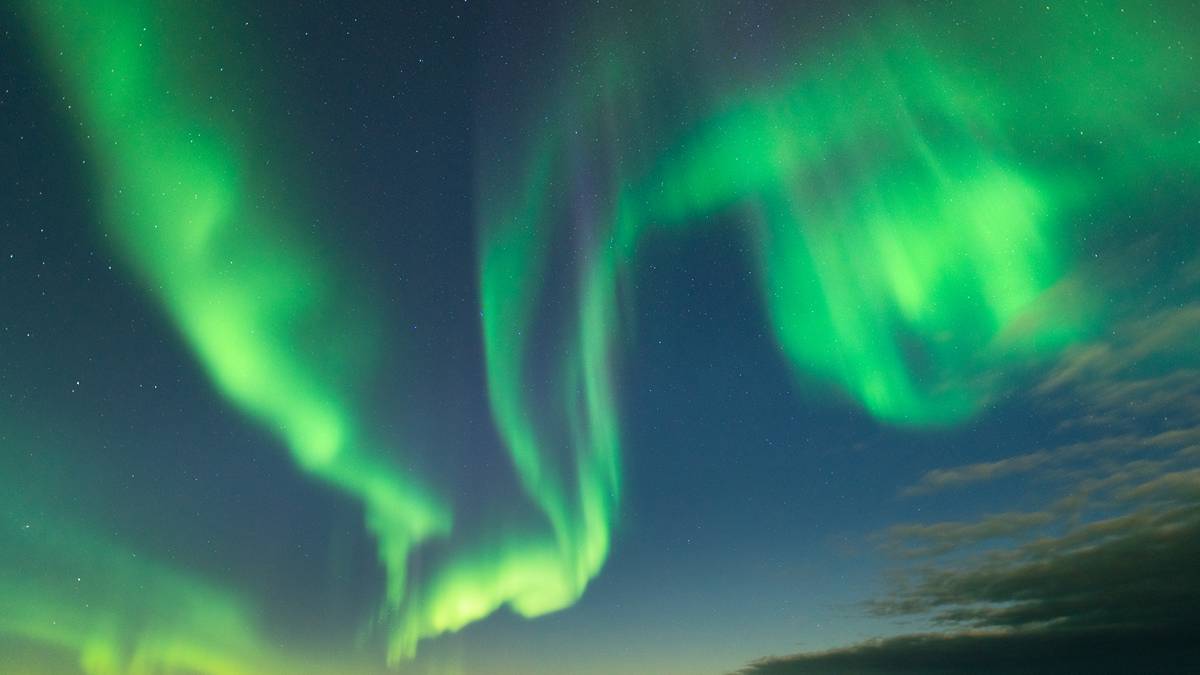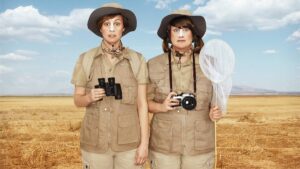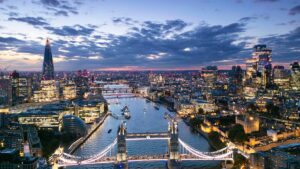One of the most reliable spots to see the Northern Lights

The aurora borealis swirl above Long Lake in Yellowknife. Pic: Getty Images
Yellowknife on the flat expanse of the Canadian Shield directly beneath Auroral Oval makes it a reliable spot to see the aurora borealis.
Words by Kendall Hill for Escape.com.au.
This article may contain links from Escape’s affiliate and advertising partners. They may receive payments when you click on links, buy through them or share this content.
Yellowknife’s location on the flat expanse of the Canadian Shield directly beneath the Auroral Oval makes it one of the most reliable spots to see the aurora borealis.
When I meet Jordan Balsillie in the foyer of the Explorer Hotel I haven’t been outside yet so ask him what’s it like. “Oh, it’s pretty nice,” he says. “It’s (minus) 25 but feels like (minus) 22. Yeah, a nice day.”
It’s February in Yellowknife, frozen capital of Canada’s remote Northwest Territories, so the minus signs are implied. But for someone (me) who left 39C in Melbourne for night-time temps of -39C here, it feels important to make the distinction. This is, after all, the coldest place I’ve ever been on Earth.
Madness to come here in winter, obviously, but I’m not alone. The hotel’s swarming with tourists all chasing the same elusive high – aurora borealis, the Northern Lights.
Yellowknife’s location on the flat expanse of the Canadian Shield directly beneath the Auroral Oval, the most active band of solar-flare activity, makes it one of the most reliable spots to see them. Stay four nights here and you’ve got a 98 per cent chance of catching the show, according to local lore.
I’m in the region for five nights and witness the aurora on four of them. It’s worth every sacrifice, even the brain-numbing cold, to watch the sky flicker to life with such mesmerising light and energy. It’s like falling under a spell.
Yellowknife has a certain magic to it as well. It reminds me a bit of an outback Australian mining town, about the size of Kalgoorlie but with quirk and multiculturalism to rival Coober Pedy.

Its fortunes were forged first in gold and now diamonds, dug several hundred kilometres away at the Diavik and Ekati mines. Government services and a growing tourist trade centred around the aurora seasons (August-October, December-April) also keep the town ticking along.
Balsillie, a guide with My Backyard Tours, shapes my first impressions of the place. He takes me for a great flat white at Barren Ground coffee roastery before stopping by the zinc-clad parliament building and the Diamond Centre, basically a PR and sales shopfront for Rio Tinto. (A sign on the main drag, Franklin Avenue, warns: “Caution: Icy Conditions May Be Present.” You reckon?)
Far more fascinating is Great Slave Lake where around 30 colourful houseboats sit frozen into the solid ice. This is the bohemian heart of the city, where renegades live free from council bylaws and revenue collection (as seen on the reality TV series Ice Lake Rebels).

“We’re five minutes from the capital city and there are no taxes, no rules and no regulations,” houseboat resident and tour operator Richard McIntosh tells me. “It’s great because you don’t need a permit to do anything on the lake.”
One of the original house-boaters is Anthony Foliot, self-proclaimed Snow King of Yellowknife. He organises the annual Snowcastle, an elaborate ice sculpture originally built for his kids but these days the showpiece of a month-long festival featuring music performances, art shows and comedy – even a royal ball. In autumn the community stages the Dog Island film festival where locals paddle up on canoes, kayaks and boats to watch movies from the water.
Each night the Explorer Hotel becomes a buzzing hub as heavily swaddled tourists, mainly from Japan, Korea and China, head out to find the lights. Some bus off to the teepee encampment of Aurora Village where the recorded commentary urges them to “Remain patient, and never lose hope”.
Others book private tours such as the highly entertaining one I did with Dene elder Joe Buffalo Child, racing about the white wilderness looking for signs of sky life (northstaradventures.ca).
We catch glimpses of the aurora twice, but it’s so bitterly cold out we spend most of our time in the heated interior of his 4WD looking at astonishing pictures and videos of it on his smartphone.

“Back in the day it used to be -40 up here consistently from November to February, but just this week it was minus seven!” one of them says. The same guy tells me he’s really into power tools and has a collection of 160 chainsaws. Totally normal hobby.
Of all the places I’ve been this year Yellowknife is probably the most memorable, and not just for the spectacular sky shows. I doubt I’d ever go back in winter but I’m told it’s quite pleasant in September when temperatures are milder and the aurora’s at its strongest.

Dress for the weather
You need proper winter gear in Yellowknife or you will die. Plenty of places hire survival kits of down-filled jackets, lined ski pants and boots etc. And prepare to become nocturnal – aurora tours set out after 9pm and return late.
The writer was a guest of Northwest Territories Tourism and Destination Canada.
This article first appeared in Escape as I went to one of the coldest places on Earth to see the Northern Lights
Related Topics
UNLOCK INSIGHTS
Discover the untold stories of emerging ASX stocks.
Daily news and expert analysis, it's free to subscribe.
By proceeding, you confirm you understand that we handle personal information in accordance with our Privacy Policy.








